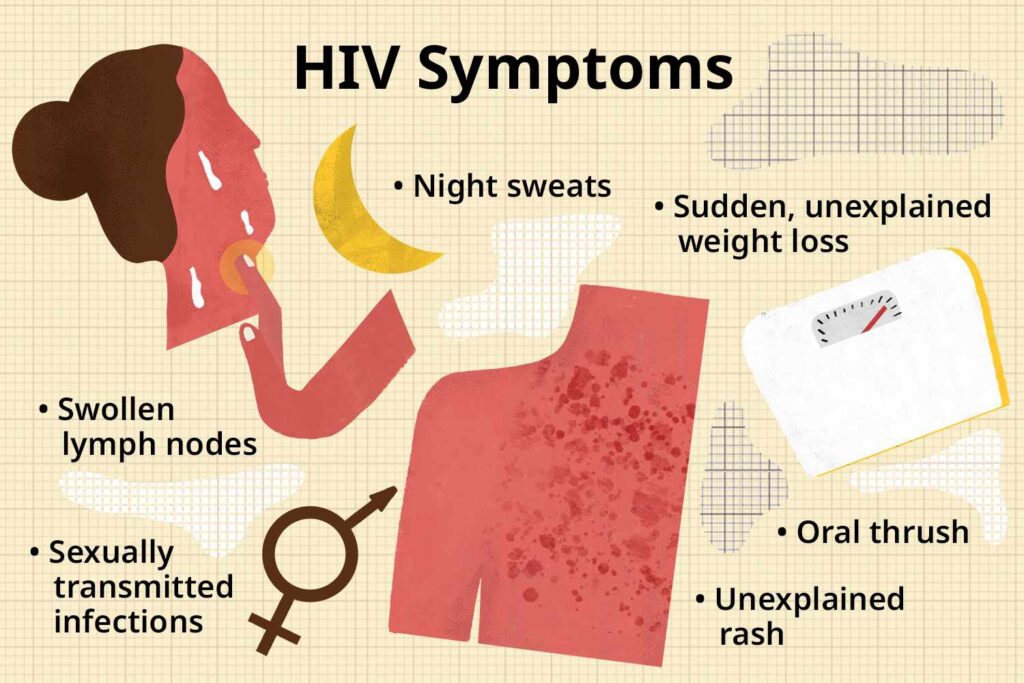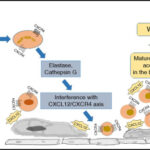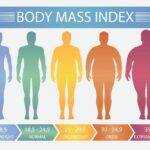Unintentional weight loss due to HIV remains one of the earliest and most distressing signs of disease progression, particularly in individuals who are undiagnosed, untreated, or experiencing treatment failure. It reflects complex physiological disturbances involving immune activation, opportunistic infections, poor nutrient absorption, and increased metabolic demands.

Understanding the Mechanisms Behind HIV-Related Weight Loss
Weight loss in HIV-positive individuals results from multifactorial causes, often occurring simultaneously and compounding each other. The mechanisms can be broadly categorized into decreased intake, increased losses, and altered metabolism.
1. Reduced Nutritional Intake
- Appetite loss due to chronic illness, depression, oral thrush, or gastrointestinal discomfort.
- Nausea and vomiting from medications or infections.
- Mouth and throat ulcers interfering with food consumption.
- Food insecurity and socioeconomic challenges.
2. Nutrient Malabsorption
- HIV can damage intestinal mucosa, impairing nutrient uptake.
- Opportunistic infections like cryptosporidiosis and CMV colitis further exacerbate malabsorption.
- Chronic diarrhea causes electrolyte and fluid loss.
3. Hypermetabolism
- Increased resting energy expenditure (REE) is common in HIV patients, particularly in later stages.
- The immune system’s continuous activation consumes significant energy.
- Fever and infections contribute to elevated caloric needs.
HIV Wasting Syndrome: Definition and Diagnosis
HIV wasting syndrome is defined by the CDC as involuntary weight loss of more than 10% of baseline body weight, accompanied by either chronic diarrhea or prolonged weakness and fever lasting over 30 days, in the absence of a concurrent illness.
Diagnostic Criteria:
- 10% involuntary weight loss
- Chronic diarrhea (>30 days) or
- Persistent fever and fatigue
- No other identifiable cause for cachexia
Wasting syndrome often indicates advanced HIV disease and demands urgent clinical intervention.
Effects of Antiretroviral Therapy (ART) on Body Weight
Modern antiretroviral therapy (ART) has significantly reduced the prevalence of HIV wasting syndrome. However, its impact on weight varies depending on the regimen.
ART-Related Changes:
- Initial Weight Gain often occurs in ART-naive patients due to immune reconstitution.
- Certain drugs (e.g., tenofovir alafenamide, integrase inhibitors) are associated with increased weight.
- Other agents (e.g., older protease inhibitors) may suppress appetite or cause gastrointestinal distress, contributing to weight loss.
Regular monitoring of weight changes after ART initiation is essential for identifying abnormalities early and managing them appropriately.
Nutritional Management in HIV-Associated Weight Loss
Addressing nutritional status is a critical component of HIV care. Early intervention can prevent the progression to wasting syndrome and improve overall prognosis.
Nutritional Strategies:
- Caloric and Protein-Enriched Diets: High-energy foods, rich in healthy fats and lean proteins.
- Micronutrient Supplementation: Zinc, selenium, vitamins B12 and D, and iron where deficiencies exist.
- Nutritional Counseling: Tailored diet plans that consider patient preferences, accessibility, and tolerance.
- Appetite Stimulants: Megestrol acetate or dronabinol in cases of severe anorexia.
- Enteral Nutrition: For patients unable to maintain oral intake.
A multidisciplinary approach involving physicians, dietitians, and mental health professionals is crucial for sustained recovery.
Addressing Underlying Causes and Comorbidities
To reverse weight loss effectively, it is vital to treat the underlying conditions contributing to it.
Common Coexisting Conditions:
- Tuberculosis and PCP pneumonia
- Candidiasis and esophagitis
- Gastrointestinal infections
- Depression and substance use disorders
Targeted treatment of these infections or conditions, alongside nutritional support, improves outcomes dramatically.
Exercise and Resistance Training for Muscle Preservation
Incorporating resistance training helps in mitigating muscle wasting, improving quality of life, and enhancing immune function. Exercise stimulates anabolic pathways, reduces inflammation, and supports mental well-being.
Recommended Regimen:
- 2–3 sessions/week of supervised strength training
- Moderate aerobic activity for cardiovascular health
- Tailored programs based on individual tolerance and comorbidities
Prognosis and Quality of Life
With timely treatment, HIV-related weight loss is reversible, especially when ART is effective and nutritional support is initiated early. However, persistent or recurrent wasting signifies uncontrolled disease and correlates with increased mortality risk.
Key Predictors of Poor Outcome:
- CD4 count <200 cells/mm³
- Uncontrolled viral load
- Persistent diarrhea and anorexia
- Delay in ART initiation
Frequently Asked Questions:
What causes weight loss in HIV-positive individuals?
A combination of decreased food intake, increased metabolic demand, and malabsorption due to infections or gut damage leads to weight loss.
Is HIV wasting syndrome still common?
It is less common today due to ART but remains a risk in untreated or poorly controlled HIV infections.
Can ART reverse weight loss?
Yes, effective ART improves immune function and helps regain weight, especially when combined with proper nutrition.
When should I worry about weight loss with HIV?
Unintentional loss of 5–10% or more of body weight over 6 months warrants urgent medical evaluation for wasting syndrome.
What are the best foods for HIV-related weight gain?
High-protein, high-calorie foods such as eggs, legumes, avocados, dairy products, and fortified cereals are beneficial.
Weight loss due to HIV is a critical indicator of disease progression and requires prompt, multidisciplinary intervention. By understanding the multifactorial causes—including immune dysfunction, nutritional deficits, and medication side effects—we can implement targeted therapies that improve survival and enhance quality of life. With ongoing ART optimization, nutritional care, and exercise, we can effectively combat HIV-associated wasting and promote long-term wellness.

